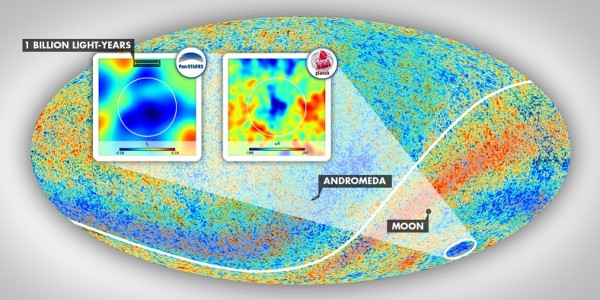Astronomers apparently discovered that the largest structure ever detected inside the universe which is an unfathomable 1.8 billion light years wide cosmic object where they claim it's one gigantic, massive empty hole.
Scientists were conducting an astronomical survey as to why there are 10,000 galaxies that are missing from this particular region in the sky that is being observed. This "supervoid" which is truly unique for its unexpected emptiness in space is considered to be the largest individual structure that was identified by any human says lead author of the study, Istvan Szapudi from the University of Hawaii in Manoa.
The research team is now observing some cosmic background microwave radiation emanating from the region that reveals a cooler than average radiation temperatures where astronomers immediately named it as a Cold Spot.
The existence of this large, cold area debunks most evolution models of the universe after the Big Bang event that lead to warmer and cooler regions to emerge during the infant stages of the universe that made the presence of the Cold Spot highly unprecedented.
Researchers now suggest that this Cold Spot of emptiness could explain how it is sucking out the cosmic background radiation that is travelling across that region in space.
The voidness however, inside the Cold Spot is not completely empty and researchers also explain that it is also not a vacuum but it does possess 20 percent less mass than any region in the universe.
According to study co-author András Kovács from the Eötvös Loránd University in Budapest, supervoids are not really totally empty, they are just under dense.
Located some 3 billion light years away from our planet, this supervoid was detected from the data of the Pan-STARRS1 telescope in Maui, Hawaii and NASA's Wide Field Survey Explorer (WISE) satellite.
Kovács adds that this is the greatest supervoid ever detected since its size and emptiness makes it a very rare event. Scientists can only expect a few supervoids this huge in the visible unverse.


